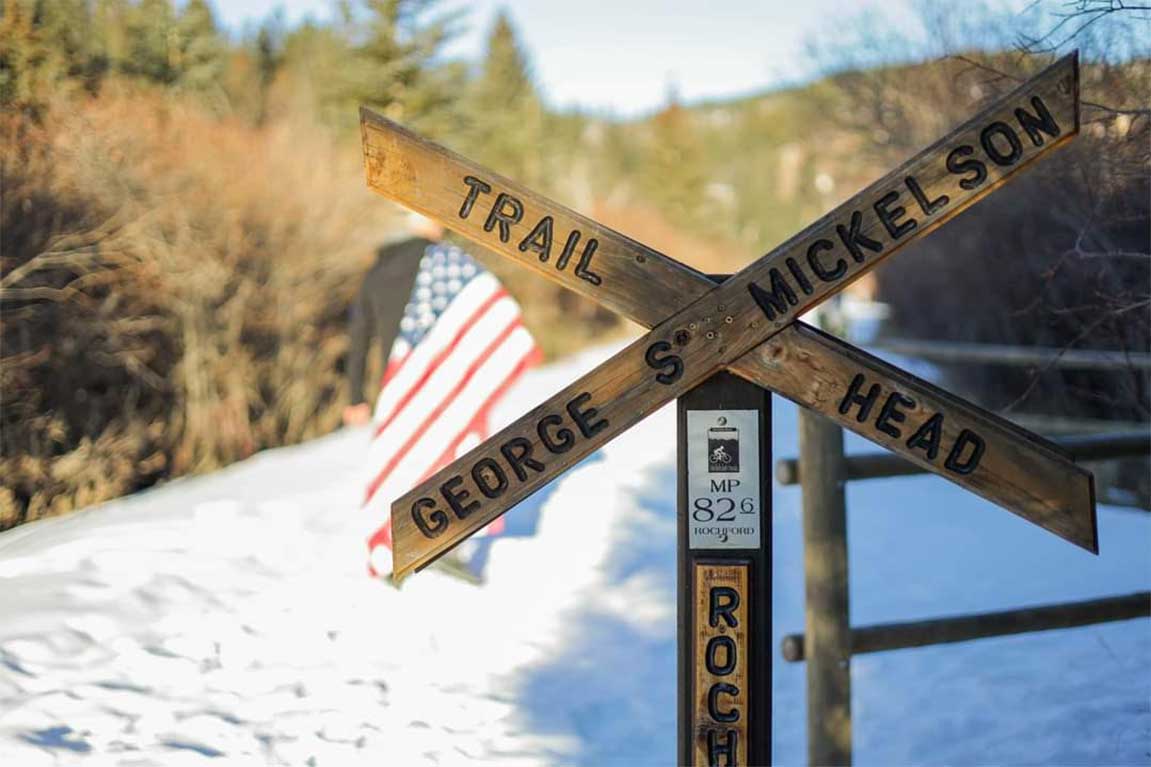VOLUNTEERS

Volunteers are needed in many areas - from registration
and package pickup to supporting marchers to help achieve
their goal. If you have any questions please contact Quenten
J. Johnson at 605-580-6012.
DAYS
HOURS
MINUTES
Embark on an unforgettable journey where you can forge lasting friendships, build unwavering confidence, and push your physical and mental limits. Join us for a 110-mile endurance march through the stunning Black Hills of South Dakota. Starting in Edgemont and ending in Deadwood, you’ll traverse the scenic George S. Mickelson Trail. This exhilarating and challenging trek takes you through picturesque pine forests, crossing converted railroad bridges and passing through four rock tunnels, all on a trail of crushed limestone and gravel.
DAYS
HOURS
MINUTES
Test your limits for a great cause! The Full March and Marathon is a 26.2-mile march on the Mickelson Trail. The march for individuals, teams, and relay participants begins at 8:00 a.m. at the Rochford trailhead and ends at the Days of ’76 Rodeo Grounds in Deadwood. There are multiple rest stops (one every 3-5 miles) along the way for refuel on food, drink, and motivation.
DAYS
HOURS
MINUTES
Don’t let the name fool you – the Mini March is a significant challenge! This 16-mile event kicks off at 10 a.m. from the Dumont Trailhead. Participants will journey along the scenic Mickelson Trail, pass through the historic city of Deadwood, and finish at the Days of ’76 Rodeo Grounds.
Test Your Endurance – Exercise Your Patriotism!
Sign Up for the 22nd Annual Black Hills Veterans March and Marathon.
The Black Hills Veterans March and Marathon is a picturesque trek through the mountainous terrain of the beautiful Black Hills of South Dakota. This march/marathon pays tribute to the many sacrifices that this nation’s veterans have made in the past and continue to make today.








Volunteers are needed in many areas - from registration
and package pickup to supporting marchers to help achieve
their goal. If you have any questions please contact Quenten
J. Johnson at 605-580-6012.

Can’t make the Black Hills Veterans March and Marathon in
person? You can still be a part of it. Join our virtual march.
We have one virtual category, 26.2 miles. No trophies will be
awarded for this event, but you will receive a T-shirt and
coin if you register and submit your miles.



The Black Hills Veterans March and Marathon was conceived in 2002
as a way to honor the sacrifices of the nation’s service men and
women. The 26.2 mile march takes place in the picturesque Black
Hills National Forest on the Mickelson Trail.
